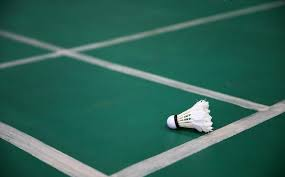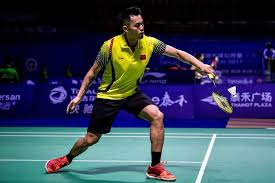Do you have heel pain when playing badminton?
Why does this happen?
Many badminton enthusiasts have not received formal training, so they are weak in preventing sports injuries and self-protection awareness. For example, after playing, some people will have heel pain. Let's learn about the causes and treatment methods.
1. Wrong landing posture
On the badminton court, when in motion, the correct posture should be to land on the forefoot. The purpose of doing so is to facilitate rapid movement on the court and increase speed. Only when taking a big step will the heel land first, and then the forefoot land in the buffer.
Therefore, heel pain is likely to be caused by your incorrect posture, landing on the heel or the full sole of the foot, which has a greater negative impact on the heel.
2. The venue is too hard
Most of the specialized badminton venues use PVC plastic floors. The foam bottom material is soft and elastic, which can reduce the chance of injury to athletes. The surface is UV treated, wear-resistant and non-slip. Designed according to ergonomic principles, it supports athletes to complete difficult technical movements such as running and smashing. When exercising, if the venue is too hard, the heel will also hurt after a long time.

3. Unqualified shoes
The floors of badminton courts are mostly wooden or plastic. In order to obtain better grip, badminton shoes mostly use cow tendon soles, which is different from the anti-slip design of common running shoes, because the latter is more designed for cement floors, and the lateral grip is not as good as badminton shoes. The comfort of shoes and feet is directly related. If the shoes you wear are not suitable for playing badminton or the shoes are not comfortable enough, the heels will naturally hurt. Therefore, try to wear softer badminton shoes when playing.
Q
What should I do if my heels hurt?
Heel pain often occurs when playing ball, which may be caused by plantar fasciitis. Plantar fasciitis is caused by aseptic inflammation of the tendons or fascia on the sole of the foot.
The most common symptom is pain and discomfort in the heels. The tenderness point is often near the heel of the sole of the foot. Sometimes the tenderness is more severe and persists. The pain is obvious when getting up in the morning, and it is aggravated by excessive walking. Severe patients even feel pain when standing and resting.
If the symptoms are more serious, you should go to the hospital for treatment in time. If it is only a mild inflammation, you can use the following methods to relieve the pain.
1. Learn the regular badminton footwork
When playing ball, the correct posture when landing after taking off should be to land on the forefoot. Avoid landing on the sole of the foot and the heel first, because this will not only cause heel pain, but also slow down the start speed and affect your step efficiency.

2. Shorten exercise time and reduce exercise volume
When the heel hurts, first stop playing for a while, wait until the discomfort in the foot disappears, and then exercise again. Each exercise time is shortened, and sufficient rest intervals are guaranteed. Badminton often starts and stops quickly, so the heel is still under great force. Sometimes when it stops quickly, the heel is under more force.
3. Perform appropriate foot training
Before playing each time, you must fully stretch the calf muscles, straighten the calf, mainly stretch the calf gastrocnemius, and slightly bend the knee to mainly stretch the soleus muscle. You can usually practice heel raises (flexion and extension of the ankle joint). It is best to use eccentric exercises as the main method, requiring "fast start and slow release". After the exercise, you can use a foam roller to relax the calf triceps.
4. Ice treatment
If the pain is obvious after playing, you can apply ice treatment. Put ice cubes in a bag, seal the mouth, spread the towel flat on the ice compress position, and then put the ice cubes on the towel. Ice compress reduces the sensitivity of tissues to pain, relieves pain, stimulates local vasoconstriction, slows down microcirculation and exudation and swelling of surrounding tissues, thereby reducing tissue metabolism rate and inhibiting inflammatory response.